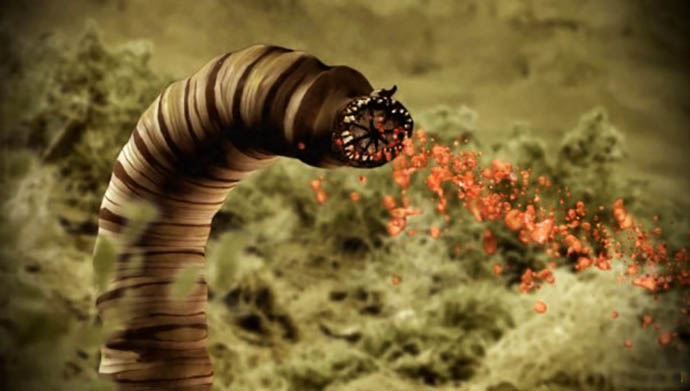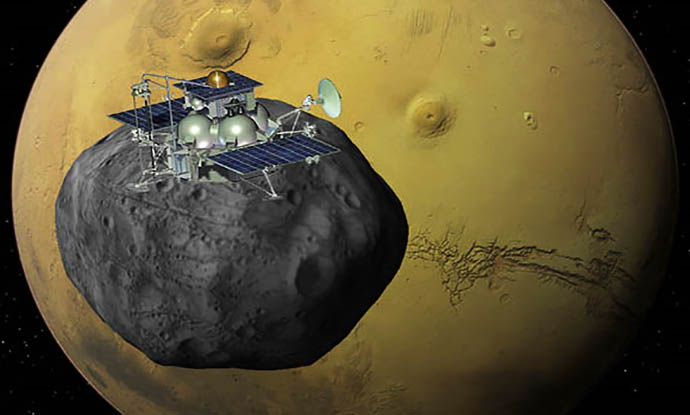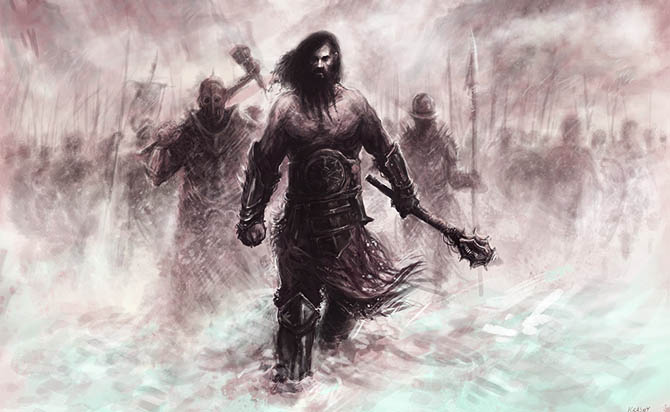
This mysterious animal still did not fall into hands of scientists though in reality of existence of the sandy monster capable to kill people at distance, it is difficult not to believe, it was seen by tens, and even hundreds of eyewitnesses. At last Nisbet’s persistence was rewarded: in 1954 permission to expedition was got. Americans on two “lendrover” left to the desert and … were gone. The U.S. Government concerned by lack of news from the scientist and his colleagues appealed to the Mongolian authorities to organize searches of the disappeared expedition. Nisbet and his employees were found in one of the low-studied regions of the country. Alas, the scientist and his friends were dead. About two serviceable cars lay bodies of all six participants of expedition. As from the moment of death of Americans there passed a lot of time and their bodies the long period were on the sun, the cause of death did not manage to be established. However, gunshot wounds on bodies were not found and all property of expedition was in safety. Why scientists died? If they died of an illness or lack of water, then for certain would manage to leave some notes to the family, and then the reason of their death would become clear. Means, researchers died almost instantly! It is not excluded that Nisbet and his colleagues nevertheless found olgoy-horkhoya or came across whole “rookery” of these creatures. The horror which hid in sand “… at an animal neither legs, nor even a mouth or eyes were noticeable: the truth, eyes could be imperceptible at distance. Most of all animal resembled a stump of thick sausage length about a meter. Both ends were stupid and to sort where the head where a tail, it was impossible. The big and fat worm, the unknown inhabitant of the desert, coiled on violet sand. There was something disgusting and at the same time helpless in its awkward, slowed-down movements”. This description of an animal unknown to science from the Gobi Desert in the story “Olgoy-horkhoy” of the famous scientist and the writer Ivan Efremov in the seventies seemed to me usual fantastic fiction until I learned that in Mongolia locals do not doubt real existence of this terrible and imperceptible being capable to kill at distance. Mongols call the mysterious monster of sand olgoy-horkhoy. In translation from Mongolian “olgoy-horkhy” “the intestinal worm” means, the animal actually reminds a stump of a thick gut of dark red color. Mongols from the far ancestors learned that, despite the quite harmless look, this animal is extremely dangerous, and better close not to approach it. It is considered that this killing worm is allocated with ability “to shoot” a stream of strong poison and to strike the victim at quite considerable distance. This poison is so toxic that not only the person, but also such large, adapted for life in the desert instantly perishes, an animal as a camel. It should be noted that similar “firing” by poison is not a novelty in fauna. Two species of cobras which also shoot poison live in Africa. These are quite large snakes reaching sometimes 2-meter length. Sharp reduction of muscles the snake creates an elevated pressure in the poisonous gland and killing “charge” on distance to 2,5 meters directly shoots at eyes to an animal or the person. It is quite possible what in this way arrives also olgoy-horkhy. However, in the story I. Efremov mentions also that probably this worm can kill also with an electric discharge of huge power. Such way of protection also exists in the nature at some species of fish, but on the land of owners of “the electrodigit weapon” it was still revealed not. In favor of what olgoy-horkhy can strike the victim with an electric discharge, the story of one of locals demonstrates. Somehow in Mongolia the group of the western geologists also worked at a halt one of them, having a good time, began to stick a metal rod in sand. Suddenly his body shuddered from convulsion, and he instantly died. Literally in seconds in that place where the metal rod stuck out, sand began to move and from its depths the awful worm seemed. As in this case about any use of poison cannot go and speeches, it is necessary only to assume that the unfortunate geologist was killed through a rod with an electric discharge of huge force. The most part of time of olgoy-horkhy hides in sand and seldom appears on a surface. It is authentically unknown, than this awful worm eats. Most likely, olgoy-horkhy kills people and large animals not for livelihood, simply, deprived of teeth, claws or fast legs, the worm considers potentially dangerous to himself any live object and acts, without waiting for attack, to reflect it or to escape at least it has no opportunity. The huge worm really reminding meter long loaf of thick sausage or a stump of a dark red gut with some similarity of small outgrowths or thorns on both ends – that’s all that at the moment is known of appearance of this killing creature. To find and … to die About olgoye-horkhy in Central Asia it is known long ago, but Europeans learned about the mysterious inhabitant of sand only in the second half of XIX century when it the famous traveler and the scientist Nikolay Mikhaylovich Przhevalsky mentioned in the notes. In more detail about the mysterious monster the American zoologist Roy Andrews wrote in the book “In the wake of the Ancient Person”. In 1922 he headed well equipped and numerous expedition of the American museum of natural history which worked three years in Mongolia and devoted a lot of time to researches in the Gobi Desert. When Andrews arrived to Mongolia and met the Mongolian authorities, the prime minister of the country addressed to him with a strange request. In the book the American scientist wrote: “The prime minister expressed desire that I caught for the Mongolian government a copy olgoy-horkhoya. It is unlikely any of readers can imagine this animal. I heard about it more than once. None of attendees saw an animal, but all of them believed in his existence and in detail described it. The form it reminded sausage about two feet long (1 foot = 0,305 m – the note of the author), had neither the head, nor legs and was so poisonous that the simple touch to it caused immediate death. The animal lived in the most deserted areas of the Gobi Desert where we went. The prime minister told that he never saw him, but knows the person who saw. The minister who is present at a meeting mentioned that his distant relative also saw an animal. I promised to be engaged olgoy-horkhoy if it meets on our way …” Though the American expedition visited the deafest corners of Gobi, olgoy-horkhoya its participants did not meet. Perhaps, they were largely lucky that they avoided a similar meeting … In the fifties the XX centuries other American scientist A. Nisbet decided to find for a mysterious animal by all means. The researcher did not pay any attention to destiny signs: several times refused to it permission to researches in the territory of Mongolia, suspecting that the scientist asks for the country with the espionage purposes. At last Nisbet’s persistence was rewarded: in 1954 permission to expedition was got. Americans on two “lendrover” left to the desert and … were gone. The U.S. Government concerned by lack of news from the scientist and his colleagues appealed to the Mongolian authorities to organize searches of the disappeared expedition. Nisbet and his employees were found in one of the low-studied regions of the country. Alas, the scientist and his friends were dead. About two serviceable cars lay bodies of all six participants of expedition. As from the moment of death of Americans there passed a lot of time and their bodies the long period were on the sun, the cause of death did not manage to be established. However, gunshot wounds on bodies were not found and all property of expedition was in safety. Why scientists died? If they died of an illness or lack of water, then for certain would manage to leave some notes to the family, and then the reason of their death would become clear. Means, researchers died almost instantly! It is not excluded that Nisbet and his colleagues nevertheless found olgoy-horkhoya or came across whole “rookery” of these creatures. As the monster was also a main goal of expedition, scientists, most likely, tried to catch him. Further events could develop as with a gas-polluted well (somehow on television told about death of several people, each of them tried to take from a well of the fainted people and in turn fell a victim of poison gas): one by one scientists hurried to the aid of the colleagues who fell from influence olgoy-horkhoya and became the new victims of this monster (or monsters). Nisbet’s expedition was not the only, disappeared by searches sandy monster. When in the 90th years no problems with the admission on the territory of Mongolia became, to the country a stream various expeditions literally rushed. One looked for bones of dinosaurs, others – mythical treasures, and the third hunted for olgoy-horkhoy. Some of these expeditions did not return, but practically already nobody looked for them. What ruined their participants – attack olgoy-horkhoyev, breakage of the car, shortage of fuel, stings of venomous snakes or they just got lost, nobody knows it. Did not find, but returned the Most prepared and well equipped the Czech expeditions moved off in searches olgoy-horkhoya. The writer and journalist Ivan Makarle together with doctor Yaroslav Prokopets and the operator Jiri Skupen at the beginning of 1990 moved off to the Gobi Desert in searches olgoy-horkhoya twice. Though they did not meet the monster, but returned live and collected the extensive material demonstrating reality of existence of a killing sandy worm. By results of the carried-out expeditions on the Czech television transfer under the name “Mysterious Monster of Sand” was shown. Ivan Makarle made the following portrait of numerous descriptions of eyewitnesses olgoy-horkhoya: “The awful worm similar to sausage or a piece of a gut has length of 0,5 m and thickness about a human hand. Its tail part is as if chopped off. In general, it is difficult to define where at a worm the head as at him eyes, a mouth or nostrils are not visible. Color of the monster dark red, moves it quite strange: either it is rolled round its pivot-center, or coils with a side sideways, moving forward. The worm lives in remote sandy dunes and in warm valleys of the Gobi Desert. It can be seen only in hot months of year – in June or July. Later it buries in sand and plunges into hibernation. The worm creeps out outside in the main ambassador of a rain when the earth becomes wet. The monster is very dangerous as he kills people and animals at distance of several meters”. In 1996 the monster was looked for by other Czech expedition in the head with Pyotr Gorky and Mirek Naplava. This expedition also did not manage to meet a terrible worm, only attestations of eyewitnesses which managed to see olgoy-horkhoya were collected and at the same time to escape. In 2003 to searches of a mysterious animal to Mongolia there arrived expedition of the American researcher and traveler Adam Davies. Before Davies visited Congo where he looked for the live dinosaur who already became legendary to a mokele-mbemba, remained up to now. Alas, Davies did not manage to see personally in both of these expeditions mysterious monsters, however to consider his searches unsuccessful would be wrong. The attestations of eyewitnesses collected by the researcher served as a good contribution to a moneybox of the facts about unknown. What did the American manage to learn about olgoy-horkhy? Struck Davies that the descriptions of the monster collected by it in different corners of the country were almost identical, it said that the monster not of the imagination of locals, and a real-life animal. One of old men showed to Adam on the map of the place where killing worms live, and in the museum of National park of Gobi travelers at last saw the monster, however, it was cut out from a tree … Davies is sure that the sandy worm really exists and sometime scientists nevertheless will manage to photograph it or to catch. Among those scientists who believe in existence olgoy-horkhoya, are not present a consensus into the account of this mysterious animal. The zoologist John L. Klaudsi-Thompson, the specialist in desert fauna, assumes that he olgoy-horkhy can be a kind of a snake which strikes the victims, “shooting” poison. According to the French cryptozoologist Michel Raynal and the Czech scientist Yaroslav Mares, the worm from Gobi is the reptile two-marketable which lost paws during evolution. The monster was compared also to the myriapod shooting at the enemies hydrocianic acid and to an Annelida who in the conditions of the desert got special protective skin. Absolutely exotic hypothesis expressed even that olgoy-horkhy strikes the enemies … with a fireball. And here the Mongolian researcher Dondogizhin Tsevegmid is much more realistic, he does not put forward fantastic versions, and just considers that there are, at least, two kinds of a sandy worm. Eyewitnesses tell also about a yellow worm, so-called “shchar-horkhy”. The Toast the cameleer faced a yellow worm in mountains. And faced not one, and fifty dangerous creatures which climbed from the earth and, according to the driver, even tried to surround him. Of course, it is possible to make the most various hypotheses, but only having fallen into hands to scientists, olgoy-horkhy will reveal the secret. Attack hearts mutants! It seems that of inhabitants of a near-surface layer of Earth scientists know not all. Of course, very difficult and risky to catch olgoy-horkhoya, “dug round” in the remote areas of the Gobi Desert, but sometimes and in densely populated areas from under the earth the most real monsters appear. In 1988 the Luhansk newspapers “Semilukskaya Zhizn” and “Levy bereg” told about strange incidents in the city. In May at earthwork one of workers suffered, in an unconsciousness he was taken to hospital with a zmeeobrazny burn on the left hand. Having regained consciousness, the worker told what hit him with current though a row no electric cables lay. And two months later in the same places the six-year-old boy died, he died of defeat by current though a row of any sources of tension (cables, wires, etc.) was not. Victims were recorded also in 1989-90. In all cases of defeat were connected by current with earthwork or with the fresh earth brought from other place. In one of cases the victim heard some strange sobbing. In the winter of 1990 at earthwork the worker managed to catch a strange being, it actively attacked “offender”, making at the same time the sobbing sounds. Fortunately, the worker was in thick gloves and winter clothes therefore he also did not suffer. In biological laboratory of a fat worm of lilac color, about 50 cm long, defined as unknown to science and assumed that it is a mutant. Perhaps this mysterious worm was a remote relative olgoy-horkhoya? It is curious that the imperceptible killing worm lives also in South America, here he is called a minkhoka. This is a fat worm about a meter long. Favourite habitats to a minkhok – coast and floodplains of the rivers, and also coastal thickets. The worm makes quite long courses in the damp earth, sometimes unexpectedly appearing on a surface directly among residential buildings of villages. Still it was not succeeded to catch any copy of this monster. Not only pets, but also people become the victims to a minkhok. And in North America, in the USA, the case of a meeting with an unusual huge worm is also recorded. Certain Paúl M., the passionate collector of exotic bottles, sometimes in search of “rarities” looked also on garbage dumps. In one of such campaigns she also came across a huge worm with bright blue eyes and with the scales covered with the shining down. Many apprehended Paula’s story about a strange worm as the imagination of the mad young woman which could take for a worm monster anything – from the run-away manual boa to a piece of a cable … However cryptozoologists treated her story very seriously, similar blue-eyed worms известны in Southeast Asia where they are called by ingotam. And during military operations in this region in the middle of the XX century of ingot the European military observed more than once, and locals often connected mysterious disappearances of people with these worms. Alas, so far any of ingot, as well as olgoy-horkhy, did not fall into hands to scientists.






Leave a Reply